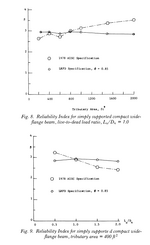Eng16080
Structural
- Jun 16, 2020
- 904
I use WoodWorks Sizer for sizing most wood members. I must have installed an update recently or inadvertently changed program settings because I just noticed the default code is set to ASCE 7-22 and not ASCE7-16 therefore using the snow load combo: D+0.7S rather than D+S. Fortunately this came to light while manually checking a beam calc. and noticing the end reactions were off.
I realize this is ultimately my error, but it makes me wonder how often errors like this occur, and if the code writers realize the potential problems caused by messing with these loads seemingly every other code cycle. I'm sure there are software users who wouldn't suspect any great harm in using the newest code in the analysis. (I'm not necessarily defending them.)
Sometimes I feel like it would be safer to write my own software for some of this stuff and just lock it to the codes I'm currently using (ASCE 7-16, etc.) and then use these same codes for the next 20 years or so (until I retire). Maybe it's not a perfect approach, but I doubt I'd ever be more incorrect than I was today due to the rather large difference between 0.7S and S.
I don't really have a question here, but wanted to mention today's screw up in the hopes that somebody else might avoid the same error. I always try to be careful but this one certainly caught me off guard.
I realize this is ultimately my error, but it makes me wonder how often errors like this occur, and if the code writers realize the potential problems caused by messing with these loads seemingly every other code cycle. I'm sure there are software users who wouldn't suspect any great harm in using the newest code in the analysis. (I'm not necessarily defending them.)
Sometimes I feel like it would be safer to write my own software for some of this stuff and just lock it to the codes I'm currently using (ASCE 7-16, etc.) and then use these same codes for the next 20 years or so (until I retire). Maybe it's not a perfect approach, but I doubt I'd ever be more incorrect than I was today due to the rather large difference between 0.7S and S.
I don't really have a question here, but wanted to mention today's screw up in the hopes that somebody else might avoid the same error. I always try to be careful but this one certainly caught me off guard.


